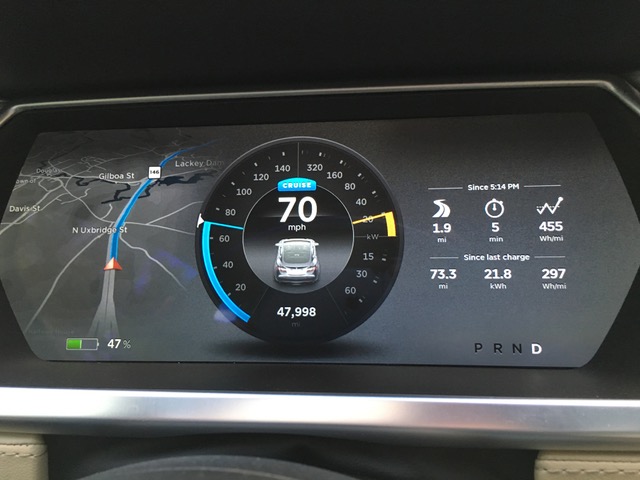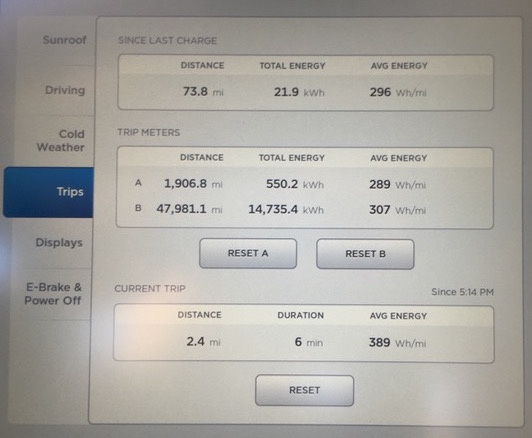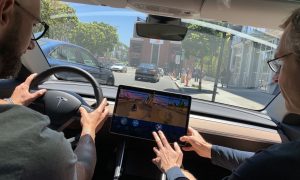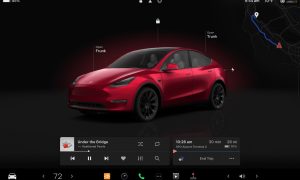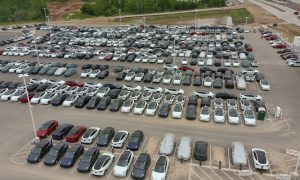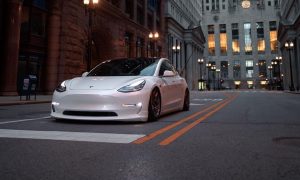Firmware
Review of Tesla v7.0 for Non-Autopilot Model S
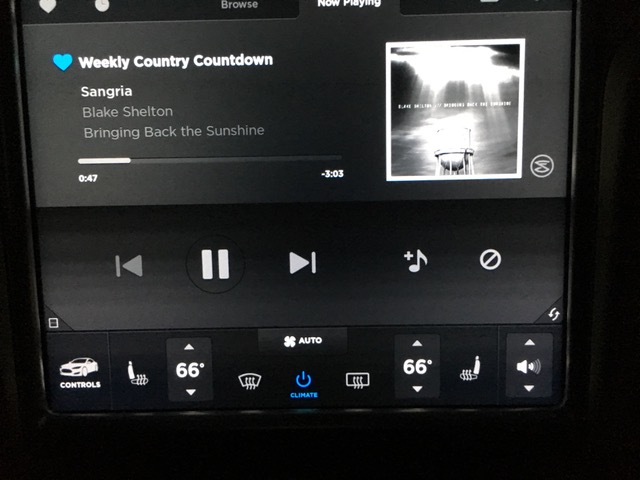
With Tesla’s v7.0 finally upon us there’s been no shortage of look at me driving with no hands type videos, and even videos of Model S parallel parking itself, but lost in the shadows was the 7.0 update that came to early adopters of the Model S – pre-autopilot.
I’d love to have the opportunity to take a new Autopilot Model S or even my upcoming Model X for a test drive, but until then here’s my review of v7.0 for the non-autopilot enabled Model S.
New Dashboard
Owners of a Model S produced prior to September 2014 (or those who opted out of the Autopilot upgrade) are still presented with a number of compelling updates in this latest release. Most notable is the redesigned instrument cluster.
Prior to the official over-the-air rollout of 7.0, I had concerns that non-autopilot cars would lose the existing analog speed and energy meter on the instrument cluster, but fortunately Tesla managed to keep them intact and made good use of the, otherwise empty, real estate.
A picture of your vehicle is presented in the center of the dial. The picture animates based on the current status of your vehicle which includes brake lights, turn indicators, headlights, reverse lights, and more. I really like the flat look of v7.0 and happy to see the great use of space with the refreshed design.
A few indicators have shifted location in v7.0 such as the battery meter and drive status (P, N, D, R). I like the fact that Tesla has de-emphasized the previous prominently displayed battery charge level indicator. My guess is that Tesla didn’t want drivers to unnecessarily focus on the range of the vehicle. After all, Model S owners have proven that they can smash world records by driving 550 miles on a single charge.
Among other changes on the instrument cluster is the removal of current date, outside temperature and door status. The status is still available through the main 17″ touchscreen, but to get them back on your instrument cluster will require you to toggle to a new clock widget. Personally I would have preferred that Tesla left those on the instrument cluster so I don’t need to glance over at the touchscreen whenever I need to know the time.
The Trip A and B meter is no longer available on the cluster. In exchange, Tesla added a new widget that tracks your driving metrics since last charge.
v7.0 Widgets for Non-Autopilot
 I really like what they did with the new Trip widget. I’ve always been a fan of the “since last charge” breakout and with the additional breakout by last time of day driven, I’m liking it even more. If I need the longer range trip meters (trip A or trip B) I can still retrieve that through the center 17″ touchscreen. I use my Trip A to track monthly driving details and Trip B to track lifetime usage.
I really like what they did with the new Trip widget. I’ve always been a fan of the “since last charge” breakout and with the additional breakout by last time of day driven, I’m liking it even more. If I need the longer range trip meters (trip A or trip B) I can still retrieve that through the center 17″ touchscreen. I use my Trip A to track monthly driving details and Trip B to track lifetime usage.
The new clock widget provide time of day and external temperature, but I find it to be a poor use of space. I generally like the left instrument cluster to display my navigation info while the right cluster shows my trip meter stats. I don’t want to give either of those up so therefore I’ll likely never use this clock widget.
How do you guys feel about the clock widget? Leave me a note in the comments below.
Noticeably absent in v7.0 for non-autopilot vehicles is the ‘Car Status’ widget that displays tire pressure. Apparently the hardware to support reading of individual tire pressures is also missing on older generation Model S. I’m slightly disappointed by this since even my 2007 Acura MDX was capable of displaying this info. I was hoping Tesla was able to add this in via a user interface update but I guess that’s not the case.
Updates to the 17″ Touchscreen (Non-Autopilot)
The user interface (UI) within the 17″ display received less attention in v7.0 however per Elon’s tweet 7.1 will see more enhancements along with a “main UI upgrade”.
@lordsshrivas Lots of upgrades and a new look, although main UI upgrade coming with 7.1
— Elon Musk (@elonmusk) October 11, 2015
The touchscreen display is flatter and cleaner but some icons still have a 3D look to it. Contrary to Apple’s iO6 which saw a complete revamp to a flat look, Tesla seemed to have left some elements alone. The only other update I found besides the cleaner UI is Trips which adds new Current Trip section and a reset button for it.
Tesla made the touch points larger and more responsive. While I think making the touch points larger is a good idea, it comes with a trade off – greater dead space. The area around the audio controls is a perfect example of how much dead space has been added.

v7.0 Extras for Non-Autopilot
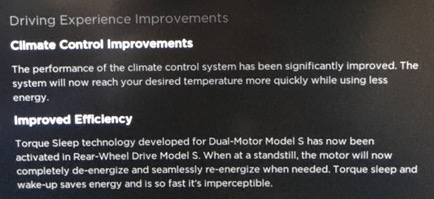
Other than cosmetic updates, Tesla also mentions the addition of two new features in its v7.0 release notes.
Improved climate controls – This update supposedly helps the Model S achieve the proper cabin temperature more quickly while using less energy. What they didn’t mention is if and how this impacts range mode.
Torque Sleep – A feature that’s present on the dual motor Teslas has made its way to the RWD Model S, and it’s designed to improve energy efficiency. No mention is made of the expected affect on range. I haven’t been able to detect any noticeable difference in the performance or behavior of the car, but it’s still good to know that they continue to improve even older generations of the Model S.
Absent from this update is any mention of an improved Hill Hold. I took my car for a drive and gave it a test, but confirmed there have been no noticeable changes to hill holding abilities on my Model S. Having a permanent hill hold would have been a nice bonus.
Summary
Overall I really like the v7.0 update. My favorite part of the update is the flatter look, the animated car view in the center of the instrument cluster, and the new Trip widget.
Tesla did an absolutely amazing job by providing Autopilot on the new vehicles but without leaving early adopters of the Model S out in the cold. There’s no question that they could have easily ignored us and saved a great deal of time and resources by doing so, but instead Tesla stepped up to plate and took care of us. And for that I’m even more grateful than I already am.
Firmware
Tesla mobile app shows signs of upcoming FSD subscriptions
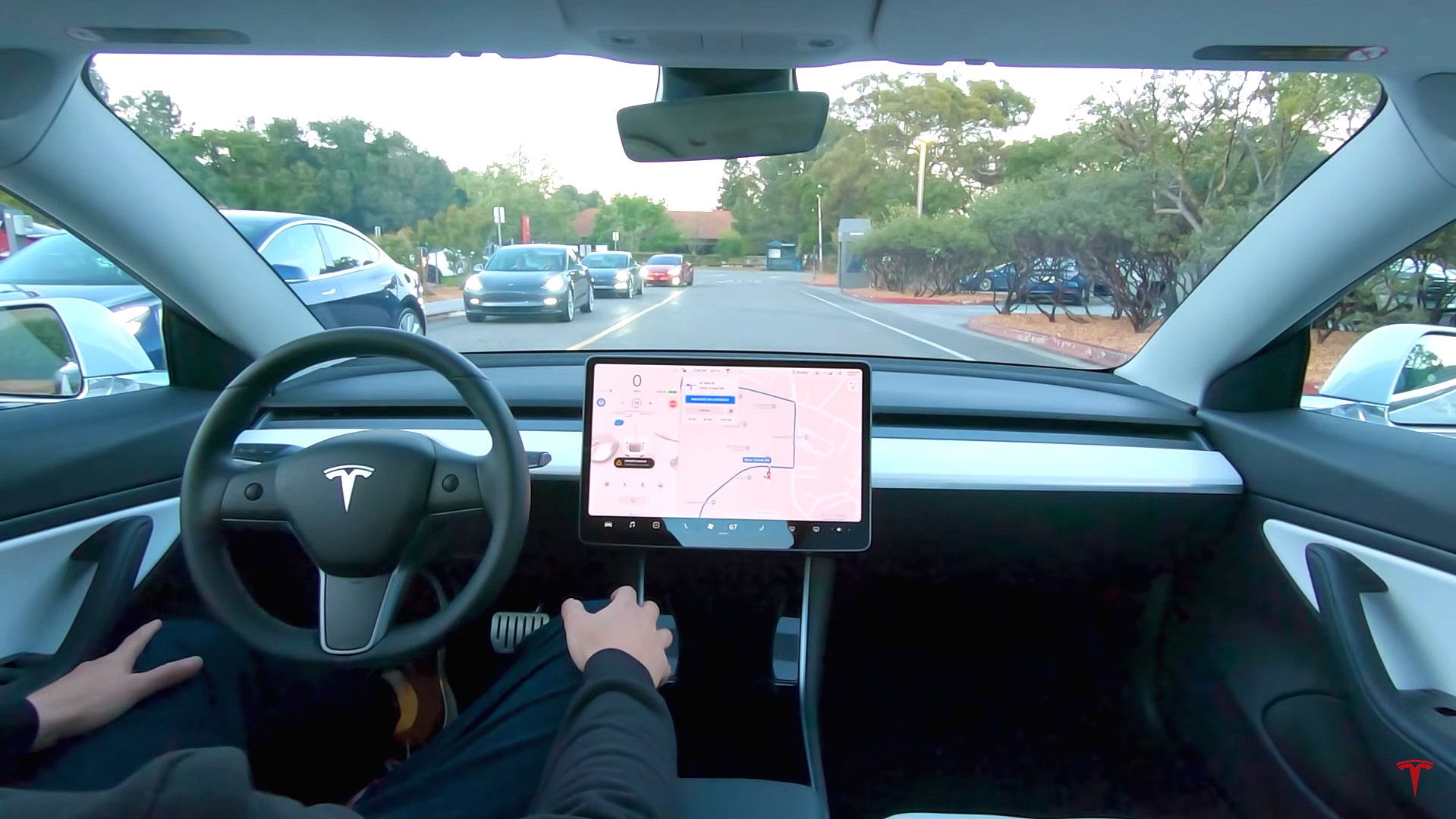
It appears that Tesla may be preparing to roll out some subscription-based services soon. Based on the observations of a Wales-based Model 3 owner who performed some reverse-engineering on the Tesla mobile app, it seems that the electric car maker has added a new “Subscribe” option beside the “Buy” option within the “Upgrades” tab, at least behind the scenes.
A screenshot of the new option was posted in the r/TeslaMotors subreddit, and while the Tesla owner in question, u/Callump01, admitted that the screenshot looks like something that could be easily fabricated, he did submit proof of his reverse-engineering to the community’s moderators. The moderators of the r/TeslaMotors subreddit confirmed the legitimacy of the Model 3 owner’s work, further suggesting that subscription options may indeed be coming to Tesla owners soon.
Did some reverse engineering on the app and Tesla looks to be preparing for subscriptions? from r/teslamotors
Tesla’s Full Self-Driving suite has been heavily speculated to be offered as a subscription option, similar to the company’s Premium Connectivity feature. And back in April, noted Tesla hacker @greentheonly stated that the company’s vehicles already had the source codes for a pay-as-you-go subscription model. The Tesla hacker suggested then that Tesla would likely release such a feature by the end of the year — something that Elon Musk also suggested in the first-quarter earnings call. “I think we will offer Full Self-Driving as a subscription service, but it will be probably towards the end of this year,” Musk stated.
While the signs for an upcoming FSD subscription option seem to be getting more and more prominent as the year approaches its final quarter, the details for such a feature are still quite slim. Pricing for FSD subscriptions, for example, have not been teased by Elon Musk yet, though he has stated on Twitter that purchasing the suite upfront would be more worth it in the long term. References to the feature in the vehicles’ source code, and now in the Tesla mobile app, also listed no references to pricing.
The idea of FSD subscriptions could prove quite popular among electric car owners, especially since it would allow budget-conscious customers to make the most out of the company’s driver-assist and self-driving systems without committing to the features’ full price. The current price of the Full Self-Driving suite is no joke, after all, being listed at $8,000 on top of a vehicle’s cost. By offering subscriptions to features like Navigate on Autopilot with automatic lane changes, owners could gain access to advanced functions only as they are needed.
Elon Musk, for his part, has explained that ultimately, he still believes that purchasing the Full Self-Driving suite outright provides the most value to customers, as it is an investment that would pay off in the future. “I should say, it will still make sense to buy FSD as an option as in our view, buying FSD is an investment in the future. And we are confident that it is an investment that will pay off to the consumer – to the benefit of the consumer.” Musk said.
Firmware
Tesla rolls out speed limit sign recognition and green traffic light alert in new update
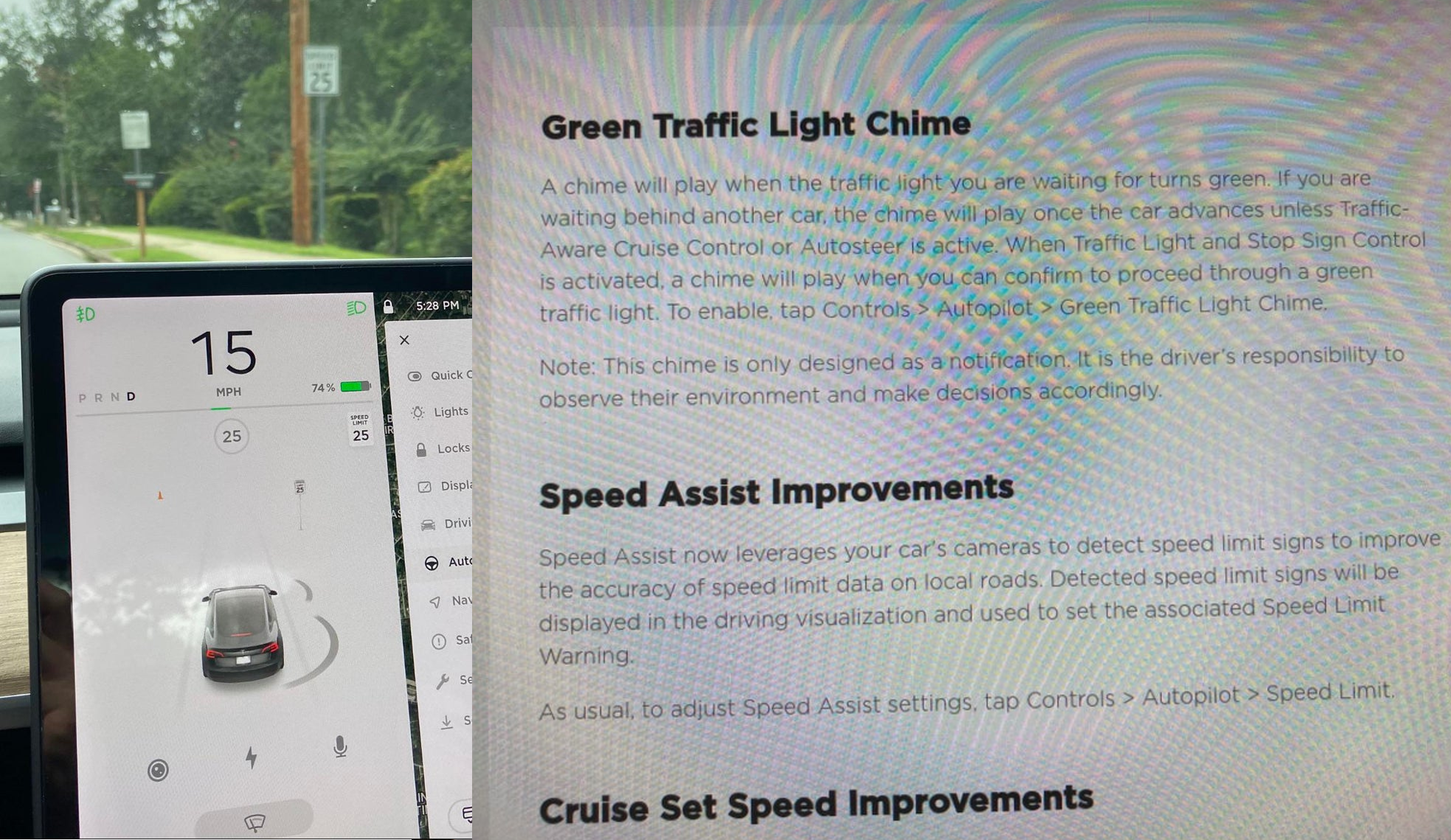
Tesla has started rolling out update 2020.36 this weekend, introducing a couple of notable new features for its vehicles. While there are only a few handful of vehicles that have reportedly received the update so far, 2020.36 makes it evident that the electric car maker has made some strides in its efforts to refine its driver-assist systems for inner-city driving.
Tesla is currently hard at work developing key features for its Full Self-Driving suite, which should allow vehicles to navigate through inner-city streets without driver input. Tesla’s FSD suite is still a work in progress, though the company has released the initial iterations of key features such Traffic Light and Stop Sign Control, which was introduced last April. Similar to the first release of Navigate on Autopilot, however, the capabilities of Traffic Light and Stop Sign Control were pretty basic during their initial rollout.
2020.36 Showing Speed Limit Signs in Visualization from r/teslamotors
With the release of update 2020.36, Tesla has rolled out some improvements that should allow its vehicles to handle traffic lights better. What’s more, the update also includes a particularly useful feature that enables better recognition of speed limit signs, which should make Autopilot’s speed adjustments better during use. Following are the Release Notes for these two new features.
Green Traffic Light Chime
“A chime will play when the traffic light you are waiting for turns green. If you are waiting behind another car, the chime will play once the car advances unless Traffic-Aware Cruise Control or Autosteer is active. When Traffic Light and Stop Sign Control is activated, a chime will play when you can confirm to proceed through a green traffic light. To enable, tap Controls > Autopilot > Green Traffic Light Chime.
“Note: This chime is only designed as a notification. It is the driver’s responsibility to observe their environment and make decisions accordingly.”
Speed Assist Improvements
“Speed Assist now leverages your car’s cameras to detect speed limit signs to improve the accuracy of speed limit data on local roads. Detected speed limit signs will be displayed in the driving visualization and used to set the associated Speed Limit Warning.
“As usual, to adjust Speed Assist settings, tap Controls > Autopilot > Speed Limit.”
Footage of the new green light chime in action via @NASA8500 on Twitter ✈️ from r/teslamotors
Amidst the rollout of 2020.36’s new features, speculations were abounding among Tesla community members that this update may include the first pieces of the company’s highly-anticipated Autopilot rewrite. Inasmuch as the idea is exciting, however, Tesla CEO Elon Musk has stated that this was not the case. While responding to a Tesla owner who asked if the Autopilot rewrite is in “shadow mode” in 2020.36, Musk responded “Not yet.”
Firmware
Tesla rolls out Sirius XM free three-month subscription
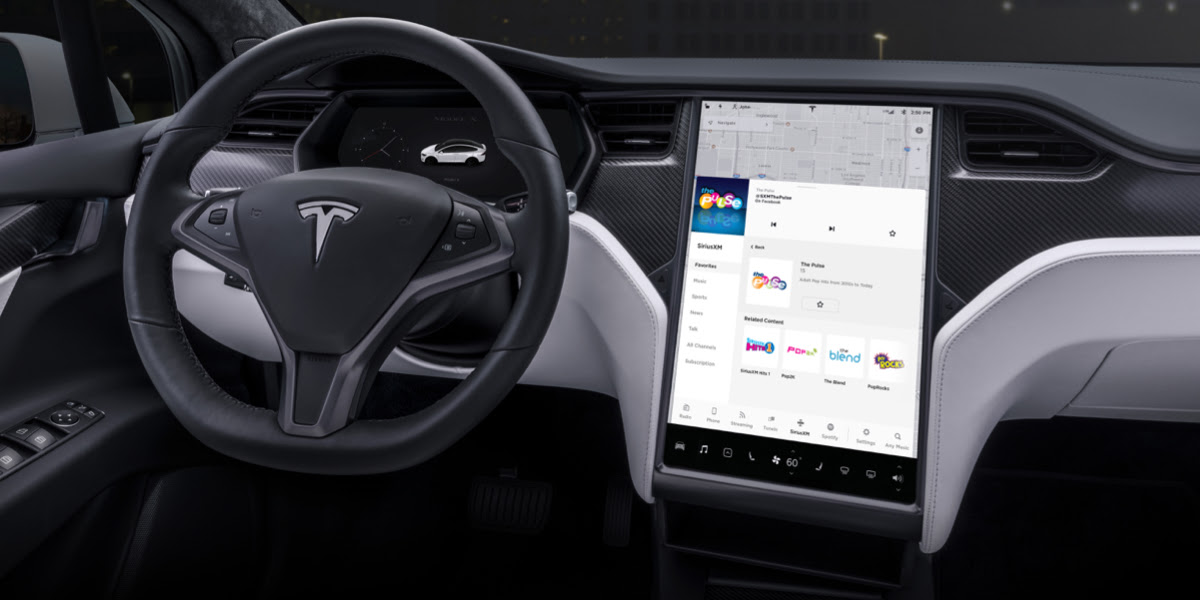
Tesla has rolled out a free three-month trial subscription to Sirius XM, in what appears to be the company’s latest push into making its vehicles’ entertainment systems more feature-rich. The new Sirius XM offer will likely be appreciated by owners of the company’s vehicles, especially considering that the service is among the most popular satellite radios in the country today.
Tesla announced its new offer in an email sent on Monday. An image that accompanied the communication also teased Tesla’s updated and optimized Sirius XM UI for its vehicles. Following is the email’s text.
“Beginning now, enjoy a free, All Access three-month trial subscription to Sirius XM, plus a completely new look and improved functionality. Our latest over-the-air software update includes significant improvements to overall Sirius XM navigation, organization, and search features, including access to more than 150 satellite channels.
“To access simply tap the Sirius XM app from the ‘Music’ section of your in-car center touchscreen—or enjoy your subscription online, on your phone, or at home on connected devices. If you can’t hear SiriusXM channels in your car, select the Sirius XM ‘Subscription’ tab for instruction on how to refresh your audio.”
Tesla has actually been working on Sirius XM improvements for some time now. Back in June, for example, Tesla rolled out its 2020.24.6.4 update, and it included some optimizations to its Model S and Model X’s Sirius XM interface. As noted by noted Tesla owner and hacker @greentheonly, the source code of this update revealed that the Sirius XM optimizations were also intended to be released to other areas such as Canada.
Interestingly enough, Sirius XM is a popular feature that has been exclusive to the Model S and X. Tesla’s most popular vehicle to date, the Model 3, is yet to receive the feature. One could only hope that Sirius XM integration to the Model 3 may eventually be included in the future. Such an update would most definitely be appreciated by the EV community, especially since some Model 3 owners have resorted to using their smartphones or third-party solutions to gain access to the satellite radio service.
The fact that Tesla seems to be pushing Sirius XM rather assertively to its customers seems to suggest that the company may be poised to roll out more entertainment-based apps in the coming months. Apps such as Sirius XM, Spotify, Netflix, and YouTube, may seem quite minor when compared to key functions like Autopilot, after all, but they do help round out the ownership experience of Tesla owners. In a way, Sirius XM does make sense for Tesla’s next-generation of vehicles, especially the Cybertruck and the Semi, both of which would likely be driven in areas that lack LTE connectivity.
-

 Elon Musk1 week ago
Elon Musk1 week agoTesla investors will be shocked by Jim Cramer’s latest assessment
-

 News2 weeks ago
News2 weeks agoTesla Robotaxi’s biggest challenge seems to be this one thing
-

 Elon Musk1 day ago
Elon Musk1 day agoElon Musk confirms Grok 4 launch on July 9 with livestream event
-
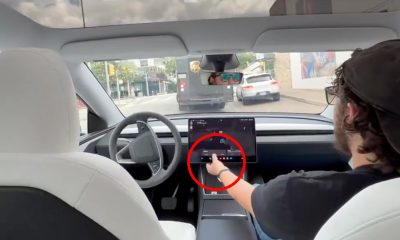
 News2 weeks ago
News2 weeks agoWatch the first true Tesla Robotaxi intervention by safety monitor
-

 News5 days ago
News5 days agoTesla Model 3 ranks as the safest new car in Europe for 2025, per Euro NCAP tests
-

 Elon Musk2 weeks ago
Elon Musk2 weeks agoA Tesla just delivered itself to a customer autonomously, Elon Musk confirms
-

 Elon Musk2 weeks ago
Elon Musk2 weeks agoxAI welcomes Memphis pollution results, environmental groups push back
-
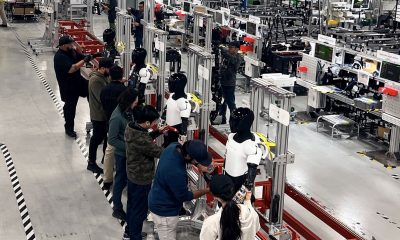
 Elon Musk2 weeks ago
Elon Musk2 weeks agoElon Musk confirms Tesla Optimus V3 already uses Grok voice AI

